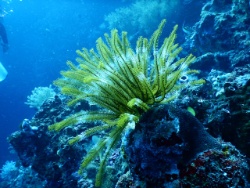Drug Trafficking: Central America’s Dark Shadow
For years, Central America has served as a one-way transit route for drugs traveling toward the United States. Now, with increasingly frequent crackdowns on drug trafficking in Mexico and continued U.S. demand, Central America has become a pivotal route to the north. An astonishing 84 percent of illegal cocaine that reaches the U.S. passes through Central America from Colombia and Mexico, the predominant producers of narcotics. The resulting drug trafficking throughout Central America cannot be ignored. As Francisco Campbell, the Nicaraguan Ambassador to the U.S., remarked to a COHA audience, “Unlike the imaginary threats of the past, this one is real. This is the first time we can talk about an honest hemispheric threat.” Central America needs to implement integrated and viable security strategies to ensure hemispheric security, while the U.S. must refocus its efforts and assume greater responsibility as the largest consumer of Latin American drugs.
Abundant Evidence
Since 1997, the Coast Guard has seized an extraordinary 806,469 pounds of cocaine and 333,285 pounds of marijuana in transit from South America through the Caribbean, the primary drug route prior to the 1990s. As the Coast Guard’s increased surveillance and policing of the corridors significantly limited the flow of drugs through the Caribbean, the drug trade simply shifted from the Caribbean to Mexico, with Central America serving as a critical transit route.
This analysis was prepared by COHA Research Associate Lauren Mathae. To read the full article, click here.
Tomorrow: Spotlight on Panama
The Council on Hemispheric Affairs (COHA) is proud to present a “Spotlight on Panama,” which will include the first two of several articles prepared by the Panama Committee. The Committee was staffed by a group of Research Associates that have spent several weeks exploring the economy, history, and politics of the region. The Republic of Panama, consistently ignored by U.S. media, is a hotbed for debate over international economic policy, widespread political corruption, and pronounced social inequality. The first of the two articles will be an update on the Wilson Lucom case, which was initially reported by COHA a year ago, and will focus on lawyer Richard Lehman’s continuous battle to protect the interests of the poor children of Panama. The second piece is a shorter article, giving a brief look at the present and future of Panamanian trade with a special focus on the Panama Canal.
The Council on
Hemispheric Affairs, founded in 1975, is an independent,
non-profit, non-partisan, tax-exempt research and
information organization. For more information, please see
our web page at www.coha.org.
ENDS


 Global Jews for Palestine: Jewish Organisations' Passover Statement, After 40 Days Of Starvation
Global Jews for Palestine: Jewish Organisations' Passover Statement, After 40 Days Of Starvation APEC: Stronger Immunization Policies Needed As Vaccine Confidence Falls
APEC: Stronger Immunization Policies Needed As Vaccine Confidence Falls 350.org: Indigenous Groups From The Pacific, Brazil & Canada Hand Demands To COP30 Presidency To End Fossil Fuels
350.org: Indigenous Groups From The Pacific, Brazil & Canada Hand Demands To COP30 Presidency To End Fossil Fuels Conservation International: Conservation International Expedition Reveals Ecosystem Recovery In Tokelau
Conservation International: Conservation International Expedition Reveals Ecosystem Recovery In Tokelau UN Special Procedures - Human Rights: UN Expert Urges States To Finance Inclusive And Sustainable Development, Not A War Economy
UN Special Procedures - Human Rights: UN Expert Urges States To Finance Inclusive And Sustainable Development, Not A War Economy Amnesty International Aotearoa NZ: Global - Recorded Executions Highest Since 2015
Amnesty International Aotearoa NZ: Global - Recorded Executions Highest Since 2015